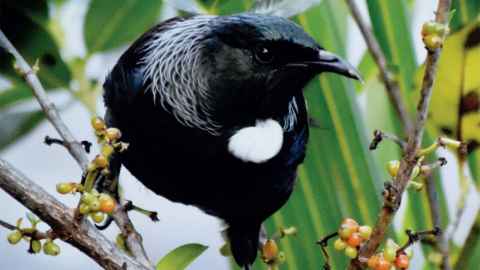Can we restore our unique natural environment?
New Zealand was the last significant landmass to be colonised by humans. The country was once filled with birds, many of them – including national icons such as the kiwi, kea and kakapo – ground-dwelling because of the absence of predators. Shellfish beds thrived around New Zealand’s coasts: mussels carpeted the seafloor of the Hauraki Gulf across an area larger than Wellington City; shellfish filtered sediments and contaminants from seawater, provided juvenile fish nurseries, stabilised the seabed and greatly enhanced biodiversity. Yet today, we have one of the worst records in loss of native species.
We are in danger of wiping out the very elements that define us and make us unique.
New Zealand’s predominant native vertebrate animals are not mammals but birds. Their extinction rates are distressingly high – 34 percent of native land and freshwater birds and 5 percent of sea birds. A further 37 percent are classified as under threat. But at the University of Auckland, we are working to halt this trend.
Professor Mick Clout of the School of Biological Sciences is researching the key foods that sustained the critically endangered kakapo and kereru before human settlement. Both species are important seed dispersers and their protection is vital to ensure the next generation of native plants, which will in turn help sustain a diversity of native birds.
New Zealand is one of the only countries in the world with native birds on its bank notes. We need to ensure that this is not the only place that future generations will be able to find them.

New Zealand’s relatively recent colonisation by humans is an asset to Professor George Perry of Environment and Biological Sciences. He is studying moa skeletons to help predict future environmental changes and how to respond to them to prevent further species extinction.
Dr Margaret Stanley is developing models that can predict the effects of climate change on invasive species and the resulting impact on native species. The goal is to have ready-developed targeted intervention programmes before there is a serious further threat to our biodiversity as a result of changes in our climate.
Scientists at the Institute of Marine Science are in the early stages of research into ways to restore and sustain our marine environments. Professor Simon Thrush and his team have begun work with Auckland action group ‘Revive Our Gulf’ and Ngāti Whātua on how best to re-establish 500 square kilometres of lost greenshell mussel beds in the Hauraki Gulf.
Ongoing research to support the growth of fish stocks is exploring the effects of sound on how juvenile fish select home reefs crucial to their breeding. New Zealand waters are comparatively quiet, providing unique conditions to record sound differences. The findings may lead to new marine technologies, and new tools for restocking and the sustainable management of New Zealand’s and Pacific nations’ fisheries.
At the interface between land and sea, Associate Professor Giovanni Coco from the School of Environment and colleagues at the Universities of Southampton and Waikato are using leading-edge mathematical simulations to study mangrove evolution over hundreds of years. Their initial research indicates mangrove forests could play a crucial role in protecting coastal areas from sea level rise caused by climate change.
Research programmes such as these have the potential to help in the recovery of our natural environment to give future generations richer, healthier and more uniquely New Zealand surroundings.
Support the Institute of Marine Science
Become a Friend of Leigh Marine Laboratory and help promote the responsible stewardship of New Zealand's marine environment.
Find out more
To learn more about how you can help, contact:
Sharissa Naidoo, Acting Development Manager, Science